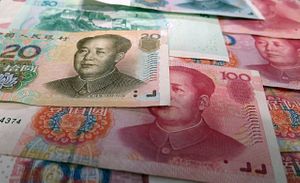The change in the People’s Bank of China’s (PBoC’s) stated attitude to monetary policy — from “prudent” in 2016 to “prudent and neutral” in 2017 — may have appeared subtle, but in fact the PBoC has made significant changes to the way it conducts monetary policy. Those changes have in turn impacted interest rates and the outlook for the economy in 2017 and 2018.
Market-Based Approach Comes to the Fore
Starting in 2016, the PBoC has used a market-based approach involving closer management of liquidity in the banking system and an expanded range of tools, such as repos (or reverse repurchase agreements) and lending facilities, to promote better capital allocation and guide market interest rates to more closely match PBoC objectives.
This is a significant change from the previous, regulated system of quantitative management, which focused on targets such as new loans or reserve requirement ratios (RRR).
One advantage of the new system is that it forces banks to use capital more efficiently. Quantitative management through RRR cuts, as Gavekal notes, incentivizes banks to set the price of money too low. By giving banks more liquidity by cutting RRR, banks would then loan the new reserves anywhere that paid more than the 0.72 percent interest offered on excess reserves by the PBoC, resulting in loans to low-return projects and capital misallocation.
Under the new system, the PBoC uses a corridor, or an interest rate band. According to Xia Le, chief Asia economist at BBVA Research, rates on the PBoC’s overnight, seven-day and one-month standing lending facilities (SLFs) mark the upper limit of the band, while the lower limit is set by the interest rate paid by the PBoC on excess deposit reserves, currently 0.72 percent.
The PBoC focuses on the seven-day interbank market rate as its policy rate and influences its position between the upper and lower limits of its corridor system by adjusting the amount of liquidity in the money markets, i.e. by adding funds when the rate is too high, and withdrawing when it is too low, through the use of repurchase, or reverse-repurchase agreements.
PBoC Creates (Limited) Autonomy
As well as heralding a market-based approach, this marks a significant change for monetary policy making in China, partly because the system and its range of tools offers the central bank more autonomy to set policy. As The Economist points out, major monetary policy decisions on benchmark lending and deposit rates go through the State Council, but rates on money market instruments such as repos and SLFs are solely set by the PBoC, providing it with new (albeit limited) independence to make policy.
The new tools allow the PBoC to be more proactive and targeted in how it goes about handling monetary policy. For example, when fears were emerging in August 2016 of a bubble in the debt markets caused by investors using cheap short-term financing (i.e. seven-day repos) to invest in longer-dated bonds, the PBoC stepped in and began issuing longer-term instruments such as 14-day repo agreements and medium-term loan facilities, which carry higher interest rates, thus raising the cost of capital for borrowers and dampening speculative activity.
Steady, Sustained Rise in Interest Rates
By using the new tools for closer money market management, the PBoC has been able to push a steady, sustained increase in the cost of capital without choking off the rebound in the Chinese economy seen during the past year. As of today, the policy rate stands at 2.81 percent, the highest level it has been for five years.
That said, with inflationary pressure emerging, the housing market looking frothy, and interest rate rises expected in the United States, the PBoC looks set to follow its recent bump in interest rates in mid-March with further policy tightening expected in the coming months. For example, PIMCO, one of the world’s largest asset managers, is predicting a further 30 bps rise in the PBoC’s target policy rate by the end of 2017.
Prospects for Slower Growth, Rising Corporate Defaults in 2017 and 2018
Prospects for higher rates are supporting expectations of slower economic growth in China in 2017 and 2018, as well as raising the prospect of credit risks. The IMF forecasts 6.5 percent GDP growth in 2017 and 6 percent in 2018, compared with 6.7 percent estimated growth in 2015, and Moody’s is warning of a spike in corporate defaults as a result of the higher cost of capital.
So, while the PBoC may have subtly changed its language to describe monetary policy, the changes and impacts wrought by its recent operations are significantly impacting the economy. With this in mind, the outlook will increasingly depend on how effectively the Chinese government will wield fiscal policy to support growth in the coming months and years, and I’ll be looking at the extent of this when China releases its Q1 2017 numbers in mid-April.

































